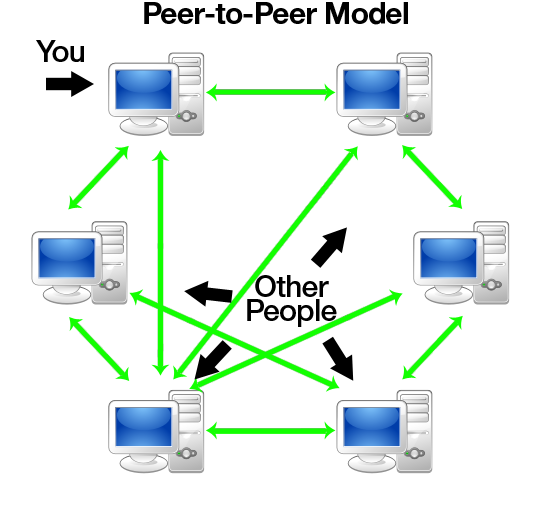
The way miners confirm transactions and creat coins.
Let‘s have a look at the mechanism ruling the databases of cryptocurrencies. A cryptocurrency like Bitcoin consists of a network of peers. Each and every single peer has to keep a record of the complete history of all transactions and thus of the balance of every account.
A transaction is a file that says, “Jhon gives X Bitcoin to Brad“ and is signed by Jhon‘s private key. It‘s simple public key where uses cryptography ( The first use of the term cryptograph (as opposed to cryptogram) dates back to the 19th century - it originated in The Gold-Bug, a novel by Edgar Allan Poe.) After signed, a transaction is broadcasted in the network, sent from one single peer to every other peer exists in the system. This is simple p2p-technology.
When the transaction is occurred it is known almost immediately by the whole network. But only after a specific amount of time it gets confirmed.
Confirmation is a Process, its the critical part, in concept of cryptocurrencies. We could say that cryptocurrencies are all about confirmation.
Untill confirmation of the transaction, it remains pending and can be forged. After being confirmed a transaction, it is set in the stone. It is no longer forgeable, it can‘t be reversed, it turns a part of an immutable record of historical transactions: of the so-called Blockchain.

No matter who or which team is confirm those transactions they are miner. Confirming transactions is their job in this cryptocurrency network. They confirmed transactions, certified them as legit and spread them in the network. After a transaction is confirmed by a miners, every node has to add it to the database. It has become part of the Blockchain.
For this job, the miners get rewarded with some number of that cryptocurrency, example Bitcoins. The miner‘s activity is the single most important part of cryptocurrency-system we should stay for a moment and take a deeper look on it.
“In the next few years, we are going to see national governments take large steps towards instituting a cashless society where people transact using centralized digital currencies. Simultaneously, the decentralized cryptocurrencies – that some even view as harder money – will see increased use from all sectors.” – Caleb Chen London Trust Media.
What are miners doing?
Genarally anyone can be a miner. Blockchain technology is not centralized network so there is no authority to delegate this task, a cryptocurrency needs some kind of mechanism to prevent one ruling party from abusing it. Imagine if someone creates thousands of peers and spreads forged transactions. The system might break immediately.
For solving this challenge, Satoshi set the rule, where the miners need to invest some work of their computers to qualify for this task. In fact, they have to find a clue in here the term is hash – a product of a cryptographic function – which connects the new block with its predecessor. This is called the Proof-of-Work. In Bitcoin, it is based on the SHA 256 Hash algorithm.

We don‘t need to understand details about thia term SHA 256. It‘s only important you know that it can be the basis of a cryptologic puzzle the miners compete to solve. When they find a solution, miners can build a block and add it to the Blockchain. As an incentive, he has the right to add a so-called coinbase transaction that gives him a specific number of Bitcoins. This is the way to create Bitcoins.Now each 10 minutes a new block is created and added to the system and many of the miners try to solve it,who can he would rewarded with 12.6 Bitcoins.
In my next posts I will clear more about mining process not only Bitcoin but also others cryptocurrency.
If you like this post please Upvote me. And stay with me so that I can serve you.
Source:- Some sort help taken from Wikipedia and Blockgeeks.
Hi! I am a robot. I just upvoted you! I found similar content that readers might be interested in:
https://blockgeeks.com/guides/what-is-cryptocurrency/